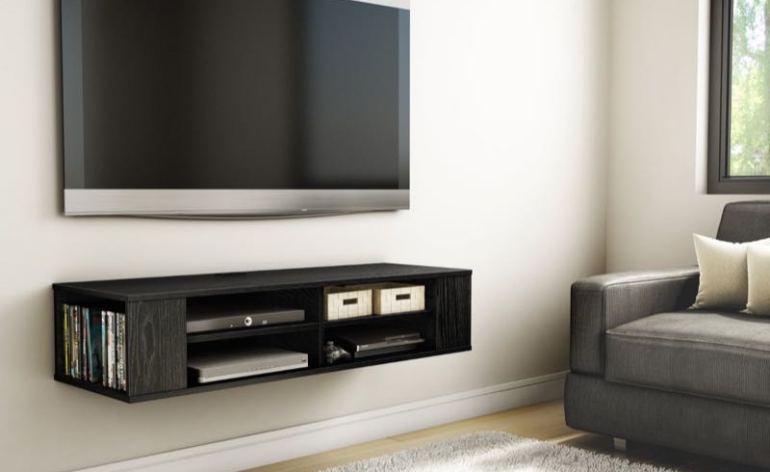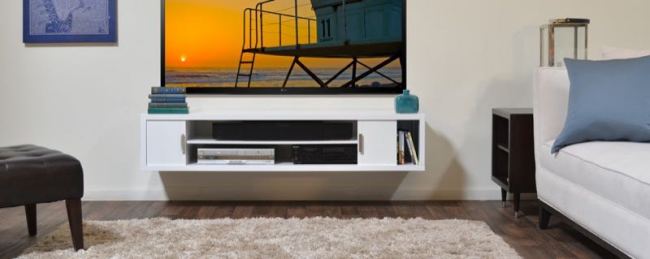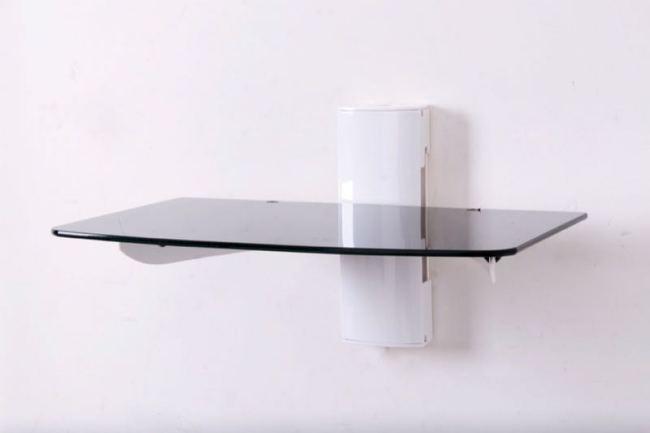Home Theater Furniture – Keeping Up With the Trends
It’s always fun to walk into a home and see holdover “old school” home theater furniture. You probably know what I’m talking about: built-ins, bulky entertainment centers, and corner-loaded AV racks designed to hold heavy CRT televisions. As home theater equipment has evolved, so has the home theater furniture used to accommodate it. From bulky cabinets to more svelt furniture and shelves that work with wall-mounted displays, home theater furniture has definitely undergone a paradigm shift. On top of that, many people are building media rooms and dedicated home theaters that place more emphasis on the movies-at-home experience.
The question becomes: What do you look for in modern home theater furniture?
Strength is Not as Important
While you used to have to be able to accommodate a 32-inch CRT sitting atop a rack filled with a 400-disc CD changer, heavy cable box, and AV receiver…more and more people are turning to soundbars and lighter-weight components. Wall-mounting your flat panel display also means that your furniture can take on a more aesthetic design than was formerly possible when you had to cram that bulky television on top. You still need a durable AV rack if you have separates, a robust two-channel listening system, or you simply have a lot of sources, but overall, the demands of furniture have freed up designs to be a lot more flexible.
Match Your Gear to the Furniture
The last thing you want to do is get a gigantic piece of furniture and then have to fill it with all manner of nicknacks to make it fit the space. With a wall-mounted TV, for example, that wall-dominating system can be reduced to a minimalist shelf system that’s cantilevered off the wall. Do you want to talk about a really cool design? Couple a small shelf with your Ultra HD Blu-ray player, AV receiver, favorite gaming system, and nothing else. Float your TV above that, and run the cables through the walls. That’s a room that will really pop!
Ventilation and Airflow
When you do decide to go big, making sure your equipment is well-ventilated can be the difference between frequent repairs and replacement, and years of enjoyment. I have a lot of my home theater equipment in a remote closet. That allows me to keep my room nice and clean, but it also presents issues with making sure I get enough air to components that really need it. Gaming systems, AV receivers, and amplifiers are the main culprits. Just like a motor that doesn’t cool properly, your electronics will shut down (or worse) if they aren’t able to properly cool themselves.
Access and Flexibility
There’s nothing worse than getting everything exactly how you like it and then finding out upgrades are impossible. What if the next receiver you buy is an inch taller? What if your next-gen gaming system gets wider or turns into something that wants to stand upright (thanks Sony!)? Making sure that you have some flexibility for the gear you own and their eventual replacements can relieve a lot of stress later on. Also, you want to make sure you can access the rear of your equipment easily and quickly. You don’t want to have to remove a shelf just to replace a cable or swap out a DVD player for a new Blu-ray player. Ensuring your cables are accessible—and long enough—will make your life all the easier as you continue to keep your equipment up to date.
Hiding Wires and Cabling
HDMI promised to eliminate a lot of wires, but it didn’t remove them all. With modern AV receivers, a lot of legacy analogue cables are being replaced and updated with single all-digital HDMI cables. That’s pretty cool, but you still need to plan your cable runs so that a) you can hide them as needed, and b) you can replace them or otherwise access them if something comes up and you need to replace or update a cable. All those that have recently upgraded to a 4k display with Dolby Vision and HDR are finding out that their HDMI cables may no longer work. If you’ve installed one in a wall with no way to swap it out, you’re going to be kicking yourself.
Things to Keep in Mind for the Future
There are definitely trends in home theater that you’ll want to be aware of. For starters, screens are getting bigger. Don’t mount your TV such that if you update from a 50″ screen to a 60″, you have to rearrange all of your cable access holes and raise the mount to a new location to clear your home theater furniture. A little planning can go a long way.
As mentioned earlier, be aware that HDMI cabling is in flux, and likely will be until 8K resolution and sources stabilize. That could be another 4-5 years for all we know. In that time you want to make sure you can upgrade your cabling if needed in order to match any new gear you could pick up that may have more stringent bandwidth requirements. Making your cables long enough, and providing extra “loops” behind your gear is a great way to save yourself a lot of hassle later.
Projector and projector screen technology keeps evolving. As it does, and as prices decrease, there may come a time when you finally pull the trigger and go with a truly large screen solution. After all, a decent 100-inch projector and screen are unbelievably cheaper than a flat screen of the same dimensions! As ambient light rejecting screens become more and more prevalent and 50,000-hour LED lamps start to take hold, you might want to keep your options open for a projector. If that happens, at least have a plan for how you’ll get your HDMI cable run from your equipment to a projector in the back of the room. Nothing is impossible, and even wireless HDMI remains an option, though support for 4K with wireless remains very elusive.
Conclusion
Typically, when people shop they’re either looking for furniture or home theater equipment. The truth is, you can make both integrate really well and both can coexist as beautiful, complementary components in your listening room or living space. Be sure to pay attention to upgradability, aesthetics, and how you’ll need to access your gear over time. If you follow a few of these basic guidelines, you can save yourself a lot of headaches down the road.





